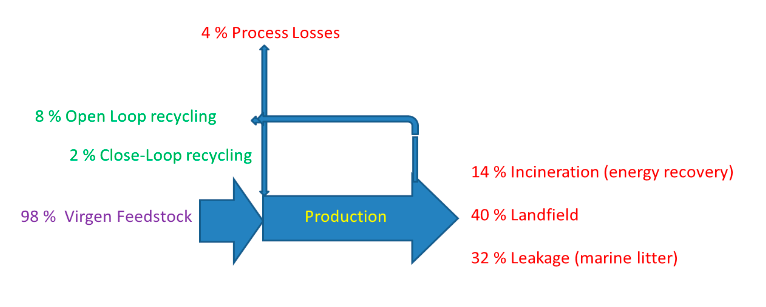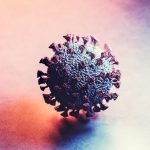Closed-circuit systems are the solution to avoid plastic contamination and reach the ambitious “zero waste”. However, there are very few examples of material that has reached the end of its intended useful life and make it new again without waste generation. The plastic industry is being pressure to implement circular-economy. In fact, single-use plastic is being promoted in Europe. For instance, PET bottles will have to contain at least 25% recycled PET (rPET) by 2025 and 30% by 2030. However, from the global plastics packaging material flows 2016 data1, only 10 % of plastics are being recycled (only 2 % close-loop). As an alternative to landfield (40 %), incineration (14 %) and litter (32 %) a system using mechanical recycling employs several steps including waste plastic collection, washing, decontamination, and separation into common materials, with additional reprocessing operations. For instance, PET waste bottles can be thermally processed into fibers for clothing or can be processed into packaging.

rPET production must increase considerably in the years to come. 100% rPET water bottles are being distributed in England. PET recovery is probably the main drawback for rPET production since it needs efficient processes from sorting through to the washing process, and all the way to the fabrication of high-quality end-products that can compete with virgin materials. Transition toward circularity2 cannot be achieved only by technological improvements as chemical recycling but also the demand must also be stabilized as well different unit operations for reuse.
1.- J. Pearce, G.Caneba, R. Handler, Procedia CIRP 80 (2019) 602-606.
2.- M. K. Eriksen, K. Pivnenko, G. Faraca, A. Boldrin, T. F. Astrup Environ. Sci. Technol. 54, 24 (2020) 16166–16175





